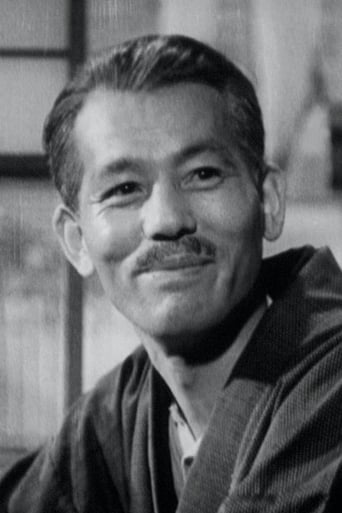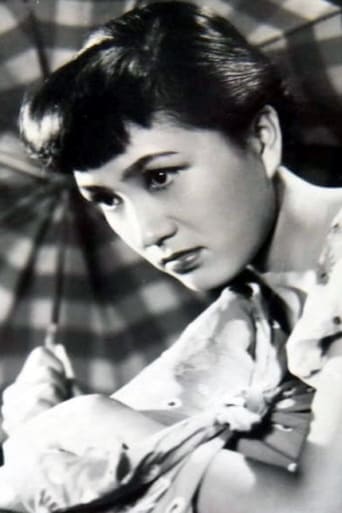Wordiezett
So much average
Chirphymium
It's entirely possible that sending the audience out feeling lousy was intentional
Erica Derrick
By the time the dramatic fireworks start popping off, each one feels earned.
Fatma Suarez
The movie's neither hopeful in contrived ways, nor hopeless in different contrived ways. Somehow it manages to be wonderful
thomaskasaki
25 years ago I made up my mind I would move to Japan. So I wrote to people in Japan who had lived there for over thirty years, and asked them what would be the #1 movie I should watch that encapsulated the spirit of the Japanese.They all suggested "24 Eyes". Now, after having lived in a strictly Japanese environment for five years, and having seen well over thirty Japanese movies, not to mention over a thousand hours of TV shows and animae, it is still the #1 to me. By today's standards it will seem extremely "G" rated, a little too slow and a bit too long. But for those who want to really understand people, and where they are coming from, I can't think of a better movie to recommend. I wish every culture, particularly those that may be going extinct, would use this movie as a guideline to tell their story.
lreynaert
One should be very careful when one uses superlatives, but, 'Twenty-Four Eyes' is one of the best movies ever made. Moreover, it is more than ever highly topical, albeit shot in black and white. It is the story of the emotional link between a junior teacher and her class of 12 children.Keisuke Kinoshita's movie tackles directly such crucial issues as freedom of speech (if you speak out against the war, you could lose your job), as calling a spade a spade (a war means simply killing people), as the choice between war and peace, between love and hate, between care (for the children) and selfishness and between sincerity and deceit or worse denouncement. His movie makes one understand that there is an all powerful authority which intervenes behind the scene in people's lives, by manipulating public opinion and by trying to turn the population (and mostly its children and young men) into deaf-mute pawns in order to use them as cannon fodder. Another means is starving the dissidents by firing them. Keisuke Kinoshita's characters are anchored in real life with its poverty (nothing to eat, or no money to go to school), its illnesses (tuberculosis), its accidents and, most importantly, the war and its victims.Keisuke Kinoshita knows what true art is. It is not an expression of emotions, but the creation of emotions (involvement) into the spectator's heart. His movie stands in sharp contrast with the actual avalanche of movie products pieced together with Meccano aliens (concocted with special effects) fighting human killers, while both are shouting their immoral gospel of violence and death. A truly cold world, and in no way the warm atmosphere created by Keisuke Kinoshita's school teacher. 'Twenty-Four Eyes' was shot by a director with a big heart, who made simply an everlasting sublime movie. A must see.
Kahuna-6
It just so happened that I watched this 1954 movie right after a newer big budget work - the 2001 Uprising.Both movie centered around WWII and the havoc it caused. Told from the victims' perspective, both dealt with the issues of living and dying in the most horrendous circumstances.While Jon Avnet tells the Warsaw Jewish uprising through vivid action scenes, director Kinoshite did not even fire a single shot. The closest he got to any kind of violence was the lead actress falling into a sandpit.Yet the pain of war came through stronger in this almost pastoral movie. It is almost excruciating to watch her slowly losing her brood of students to the cruelty of war.Hideko Takamine played the part of teacher beautifully. From a brash young innocent before the war to a wizened survivor, she did it with great sensitivity. If ever anyone needs a portrait of Japanese stoicism, she must surely be the first choice. You will surely grieve with her at the loss of her young daughter - falling to her death trying to pluck a persimmon to ease her hunger.156 minutes may seems a long time by modern movie standard. But at the end of this movie, you could almost be there at the little inn, sipping a little sake, looking at a old school photo through a blind man's eyes, celebrating life.
zetes
Mostly unknown and frequently dismissed in the West, this film is often considered by the Japanese to be one of their very best films, if not their best. I concur with the Japanese. I can understand the issues people have with it, namely that it is overly sentimental, but I think it mostly earns the tears that are shed over it. It's a film in the classic teacher genre, like Goodbye Mr. Chips. Hideko Takamine plays Hisako Oishi, a young woman who begins the movie as a first grade teacher on a small island in 1928. Being a small population, she ends up staying with the same students for several years. The film ends in the 1950s, so you kind of know what will probably happen to her male students, and what she and her female students will have to experience. It may be somewhat predictable, but it's incredibly heartbreaking. The film is beautifully made, and filled with Japanese folk songs (strangely, the score of the film is made up of a bunch of Western music, including "Bonnie Annie Laurie" and "There's No Place Like Home"; it's definitely a flaw). Takamine, who starred in several Mikio Naruse films around the same time, is exceptional.






